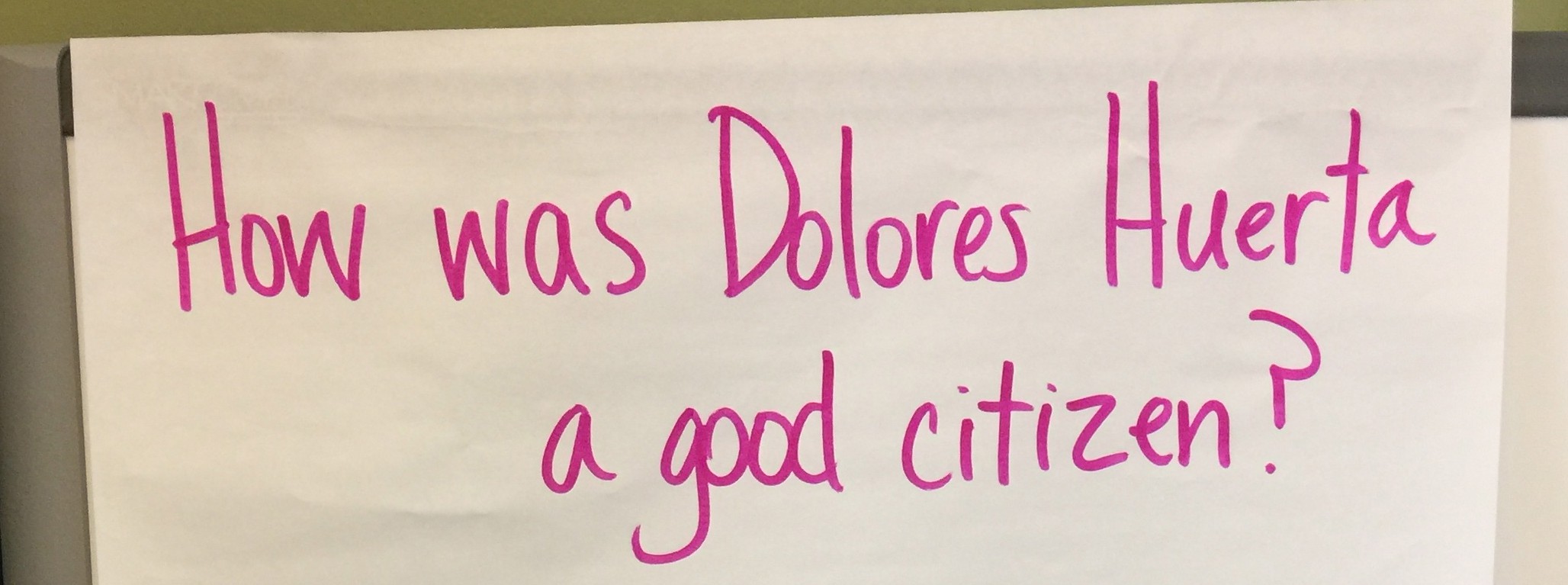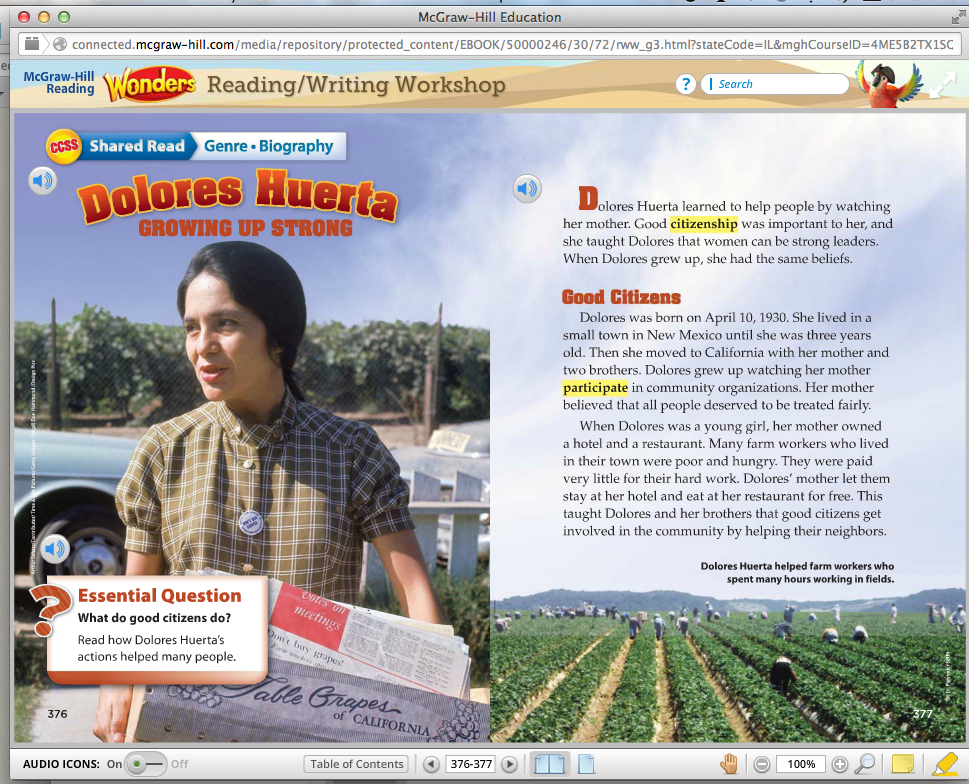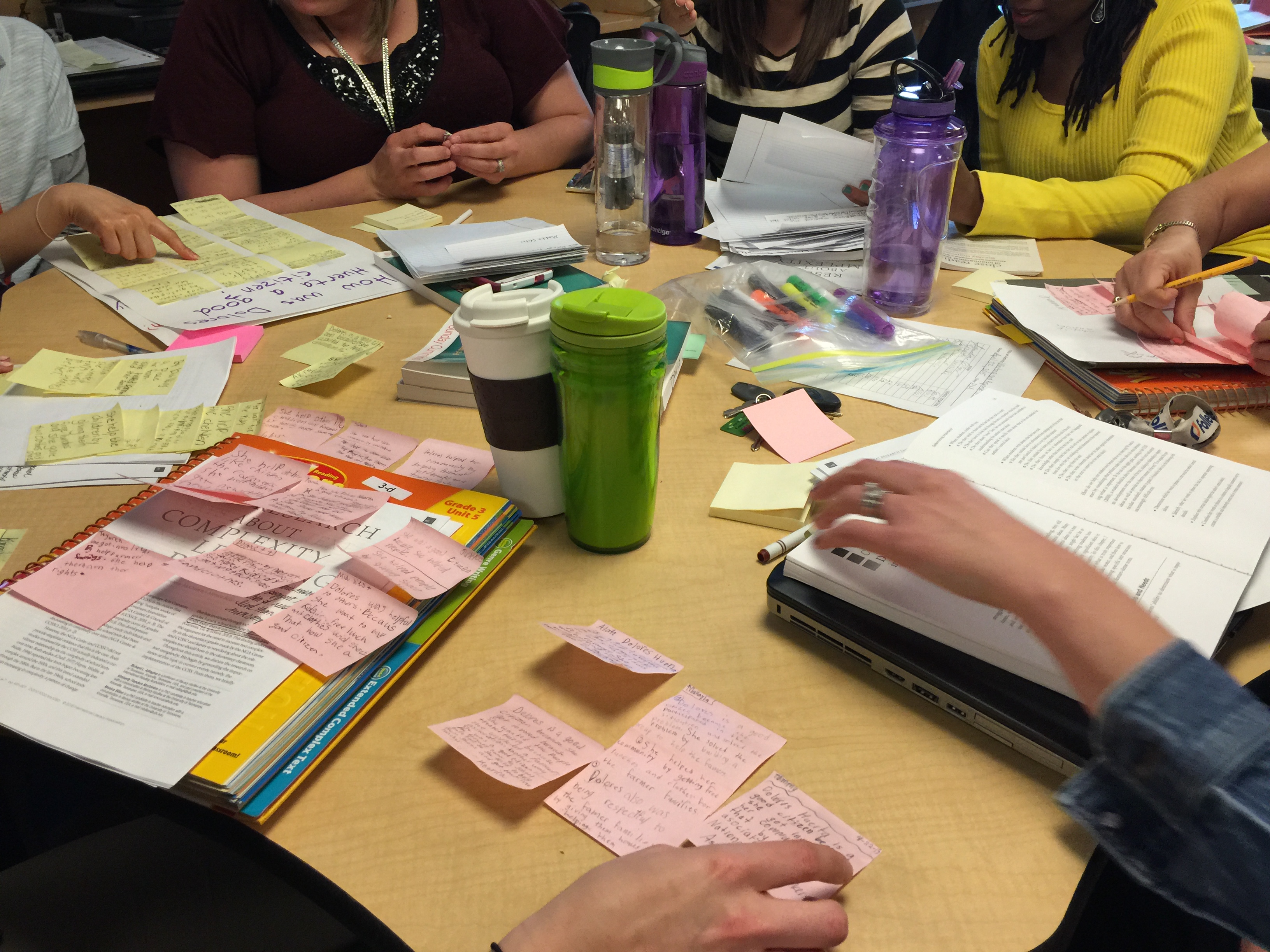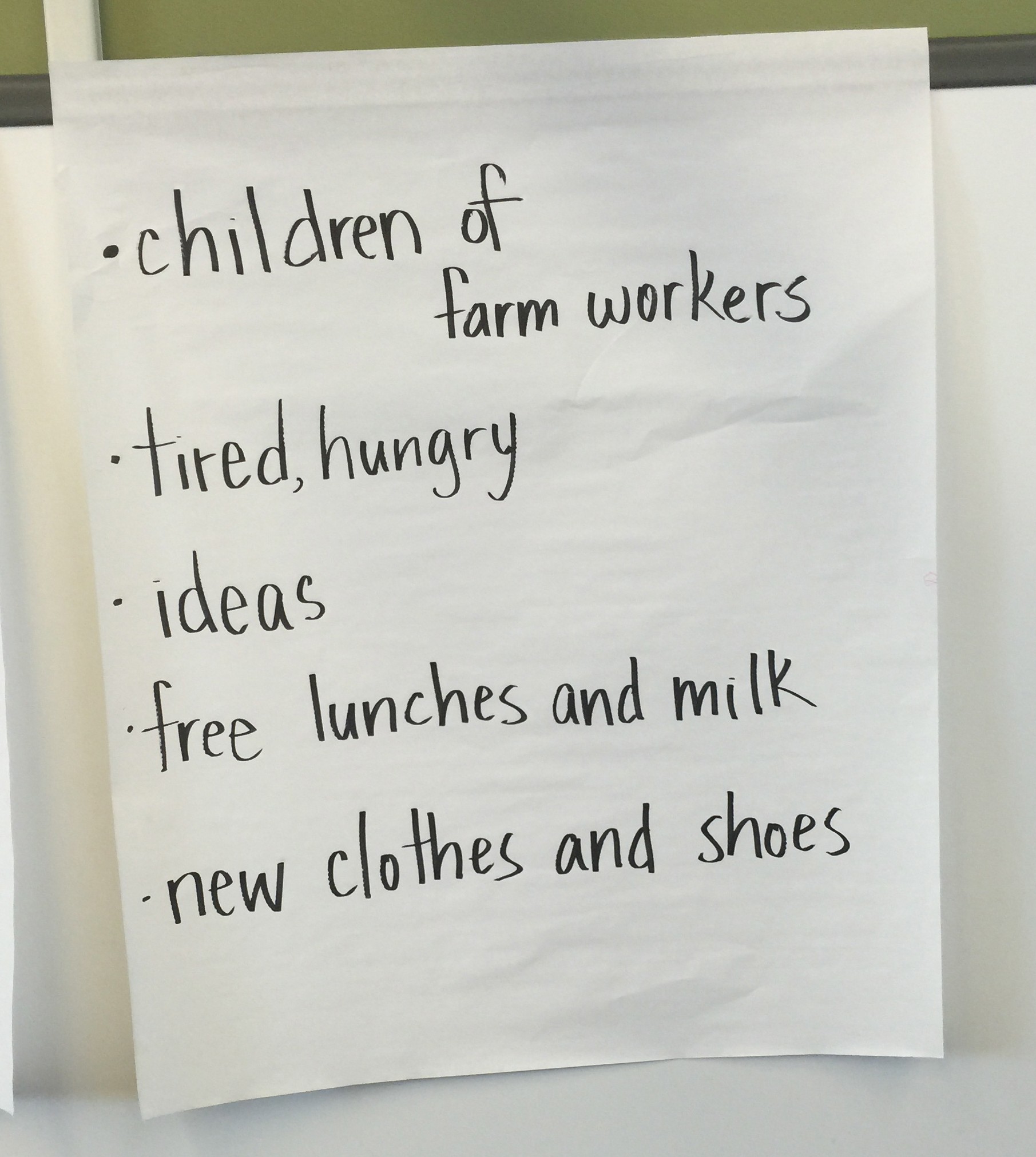

I tried something new–I provided a list of “key details” from a section of text as a way for students to review content before engaging in close reading of a more difficult section of the text. During a previous lesson, the 3rd grade students had read an article about Dolores Huerta (in the McGraw-Hill Wonders program) and written in response to the question, “How was Dolores Huerta a good citizen?” When a group of teachers and I analyzed the students’ written responses from this first lesson, it was clear the students understood the section of the text about Dolores working to help the children in the school where she taught. Missing from most students’ responses were any notes about the next conceptually more difficult section of text on Dolores’ efforts to organize farm workers. We needed to go back and do a close reading of the this more difficult section to help the students think more carefully about Huerta’s work.

For this second lesson, it was important for the students to review the section of text about Dolores helping the children–so I posted key words for the students to use to review.

When I posted the words, the look on the students’ faces indicated they recognized and remembered these details. Then I asked one person to come up front to be my partner in retelling what we’d learned during the first lesson. We took turns retelling using the key words on the chart. I followed by asking the students to turn and talk with a partner–using the key words on the chart paper as a way to retell what they’d learned. I leaned into a few conversations and coached.
It worked out nicely. Took less than five minutes. Served as a warm-up. Served as a mentor list of “key details” – words or phrases that help us answer a text-dependent question. And, most importantly, it freed up time and energy to do a close reading of the next more difficult section of text on Dolores’ work organizing farm workers.
Hope this helps.
S
